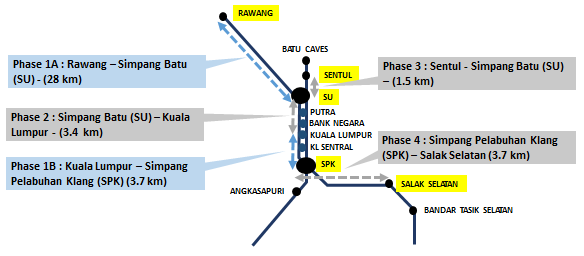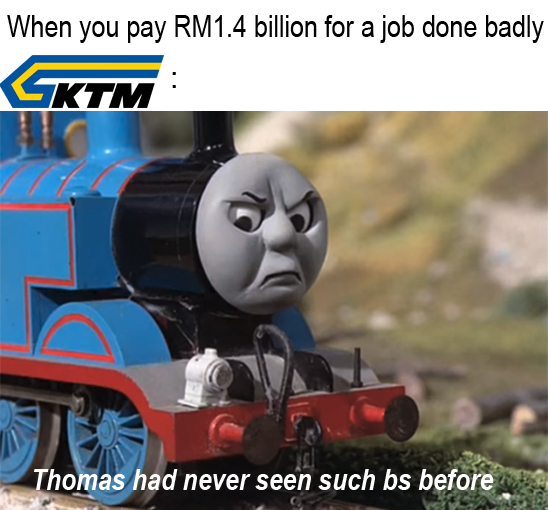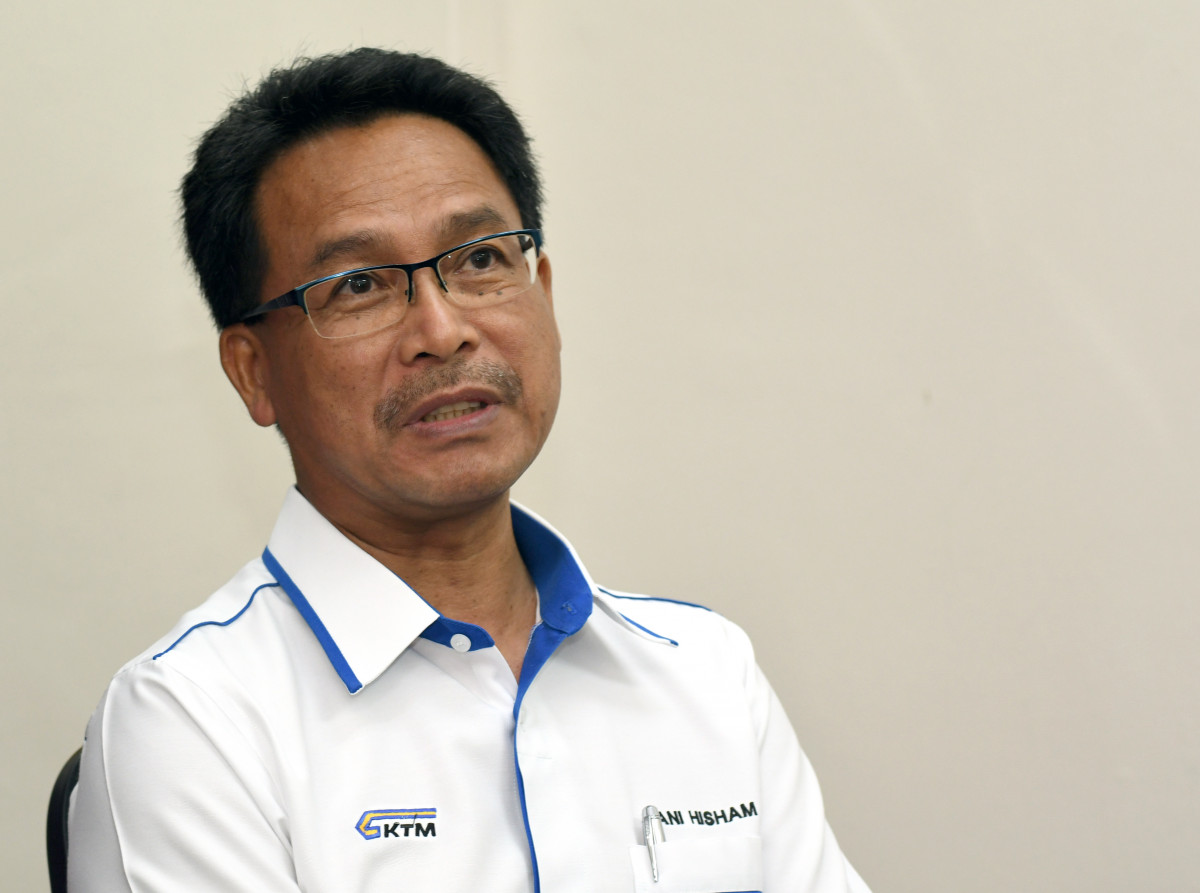PH cancelled a BN-era KTM project, only to restart it with …the same contractor?

- 1.2KShares
- Facebook1.1K
- Twitter11
- LinkedIn13
- Email12
- WhatsApp79
Amidst all the news stories involving CNY decorations and Ponggal allegedly being haram for Muslim students, you might’ve missed this headline below which, if you live in the Klang Valley, may actually be quite important for you:

In fact, if you’re one of the 60% of Malaysians who use public transportation, this is pretty bad news. The Klang Valley Double Track (KVDT) project on the railways around the Klang Valley has been going on for awhile now, and people have felt it’s prolonged presence already as it has delayed the KTM Komuter service by an additional 15 minutes to sometimes even an hour!
With so many people potentially affected by it, let’s first take a look at what exactly is the KVDT project in the first place.
The KVDT was meant to upgrade KTMB’s ailing train tracks

Anyone who’s been using the public transport system in Klang Valley for awhile now can probably tell you that while the LRTs and MRTs are often a reliable bet, when it comes to the KTM Komuters just about everyone and their pet rooster would likely say that it’s unreliable. Indeed, we even found a letter in The Star submitted by a reader detailing just how bad the KTM Komuter is from all the way back in 2006(!), with complaints about its lack of timeliness, the constant flooding of the tracks and the uncomfortable platform areas.
Which is why you could perhaps understand the previous govt’s plans to upgrade and rehabilitate the Keretapi Tanah Melayu Bhd (KTMB) railway tracks. We found that there’s been discussions on revamping the railway tracks as early as 2013, when Barisan Nasional was still in Putrajaya. The result was the Klang Valley Double Tracking (KVDT) upgrading project, which was announced in late 2015.
The KVDT project’s objectives included:
- Rehabilitate Klang Valley’s railway infrastructure
- Improve safety standards
- Increase frequency of commuter and ETS trains
- Improve comfort and convenience of passengers
- Upgrade capacity of railway infrastructure to shorten wait times to 7.5 minutes
“Previously, the frequency of the (KTM Komuter) train service from Seremban or Port Klang to KL is 30 minutes. We have managed to increase the frequency to 15 minutes. Once the KVDT project is completed, it will be halved to 7.5 minutes,” – then-Transport Minister Datuk Seri Liow Tiong Lai in 2016, as quoted from MCA’s website

Work on the KVDT project began in May 2016, with the contract for the job given to a company called Dhaya Maju LTAT Sdn Bhd, a joint venture between construction company Dhaya Maju Infrastructure (Asia) Sdn Bhd (DMIA) and Lembaga Tabung Angkatan Tentera, a govt-linked investment company.
As we understand it, the whole KVDT project was split into two different projects:
- KVDT Phase 1 (KVDT1), which would rehabilitate 42km of track between Rawang-Salak Selatan and Sentul-Simpang Batu
- KVDT Phase 2 (KVDT2), which covers up to 265km as this sees work done on KTMB tracks from Salak Selatan to Seremban and Simpang Port Klang to Port Klang.
“…DMIA received the contract in 2015. However, because of budgetary constraints of the previous government in 2015, the contract was split into two phases to facilitate payment issues,” – DMIA to The Edge in 2019, as quoted from The Edge

Seeing as the KVDT project had all the parts sorted already, it should be smooth sailing right? Well, not exactly.
BN gave the KVDT2 project to DMIA… days before the Parliament was dissolved
Okay so following GE14, Pakatan Harapan took over and Anthony Loke would replace Liow Tiong Lai as Transport Minister. During his time in charge, Loke would have quite a few issues with the KVDT project, finding issues in both phases of the job.

Starting with the KVDT1, the RM1.4 billion contract with DMIA came into public scrutiny when a Feb 2019 letter from the then-KTMB CEO Mohd Rani Hisham Samsudin to Finance Minister Lim Guan Eng and Loke was leaked. The letter seemed to show KTMB being unhappy with DMIA’s work on the KVDT1 project.
Among the things allegedly complained by Mohd Rani includes:
- A lack of qualified personnel
- Lack of proper equipment
- Failing to meet standards set in contract
- Failing to properly schedule a work plan.
Indeed, it wasn’t helped when the original 2019 completion date was missed, and that the new expected completion date would be July 2020. However, as shown from the earlier news headline on KVDT1, Loke announced that it would be delayed yet again, with the Transport Minister saying that it should be done by early 2021. In DMIA’s defense tho, they claim that this was because of factors out of their control as they had difficulties accessing the necessary worksites.

If you’re wondering how could a company given a lucrative govt project could allegedly be that bad at their job, it turns out that they may have been given these contracts without a proper open tender.
The PH govt later tried redoing KVDT2… only to give the job back to DMIA
It was just months after GE14, when new govt announced that it was cancelling the second part of the KVDT project altogether due to cost concerns as well as the way the contract was given. It seems as tho that rather than an open tender for the KVDT2 project, the previous Barisan Nasional govt handed the contract for the KVDT2 project directly to DMIA. And they gave it to them on April 4, 2018 – barely days prior to the Dewan Rakyat being dissolved for GE14.
“The Klang Valley Double-Tracking 2 project which was awarded via direct negotiations just before the last general election for RM5.2 billion, has been terminated. The project will be retendered via an open tender exercise and is expected to realise a substantial reduction in cost,” – Finance Minister Lim Guan Eng in the Budget 2019 speech, as quoted by NST
And remember that letter by Mohd Rani? With the KVDT2 contract temporarily gone from DMIA’s hands, the then-KTMB CEO also allegedly called for the govt to not reconsider DMIA for the KDVT2 project in his letter to Putrajaya.

However, both the retendering of the KVDT2 project or the reconsidering of DMIA for it would not happen, as the govt later not only revived the KVDT2 project, but also reawarded it back to DMIA and LTAT.
According to Loke, the Cabinet decided to award the contract back to DMIA following much deliberation and debate due to the possible legal implications involved in compensating DMIA for cancelling the original contract handed out by the previous govt.
“(We) decided to terminate the contract with DMIA-LTAT in September last year. However, we have also considered the legal implications which would see the government spending a huge sum as compensation to the contractors who had signed the agreement with the previous administration on April 4 last year, two days before Parliament was dissolved.
The compensation could reach RM2.5 billion according to the contractors, although it has yet to be verified,” – Loke, in July 2019, as quoted by NST
Nevertheless, it wasn’t a complete reversal of the KVDT2 project contract. According to Loke, a new agreement was made with the construction company, and the contract, originally valued at RM5.265 billion, has been cut by 15%, making it now worth RM4.475 billion. Furthermore, the original seven years given to DMIA for the project has also been cut short to five years.

So is the KTMB railway project…. back on track?
Incidentally, Mohd Rani would later resign as the CEO of KTMB, as a ‘poison pen letter’ was sent to the Ministry of Finance in Aug 2019 that accused Mohd Rani of wrongdoings, with The Edge reporting that this may have been a response to his letter to Lim Guan Eng. Mohd Rani was then officially replaced as KTMB’s CEO by Oct of last year.
As for the KDVT projects itself, it does feel a lil ironic that the plan to improve the KTM Komuter ended up being prolonged so much that it caused the trains to take even longer than before to arrive at your platform. With a roughly 32 million ridership in 2018, a huge proportion of Malaysians have had to deal with the continued delays caused by the long-running upgrade works, and with the postponement of the completion date it seems as tho there’s still no end for Komuter users.
Hopefully, by the time the KDVT projects are done, the KTM Komuter can achieve its targeted goal of shorter wait times and improved efficiency for the people’s benefits.
- 1.2KShares
- Facebook1.1K
- Twitter11
- LinkedIn13
- Email12
- WhatsApp79
